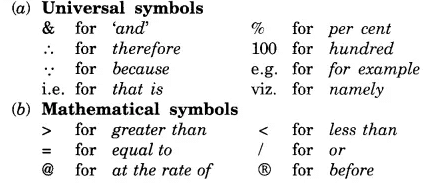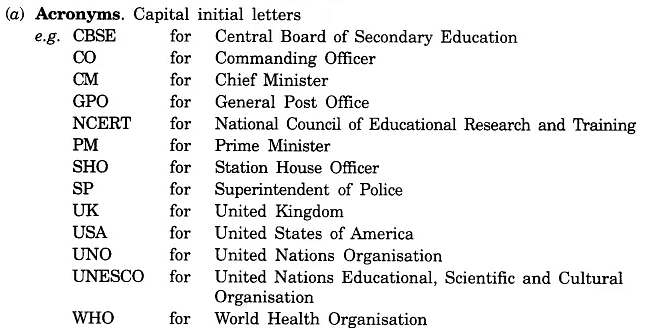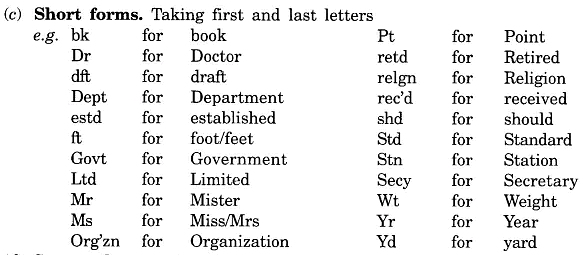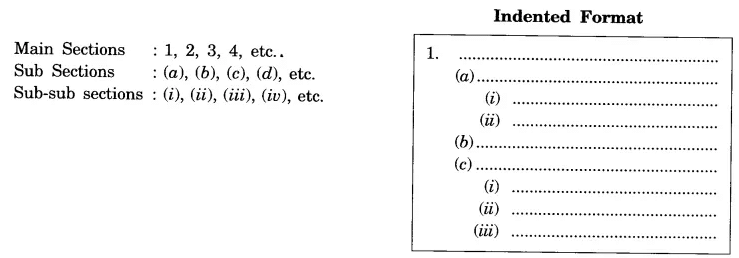Format of Note Making with Example | Business Correspondence and Reporting (Old Scheme) - CA Foundation PDF Download
Note Making
Notes are short written record of facts to aid the memory. Notes are usually taken to record a speech or dictation while listening to it or after reading a book, magazine or article. They are referred back whenever needed and may be reproduced in the desired way.
The necessity of note making
Knowledge is vast and unlimited, but our memory is limited. We cannot remember all the information all the time. Hence note-making is necessary. With the help of notes we can recall the entire information read/heard months ago. Note-making is quite useful to students preparing so many subjects. At the time of examinations, it is not possible to go through voluminous books. At such critical times, notes are quite handy. Hence note-making fulfils three useful functions:
- It keeps a lot of information at our disposal for ready reference.
- It helps us reconstruct what was said or written and thus accelerates the process of remembering/recall. .
- It comes in handy in delivering a speech, participation in a debate/discussion, writing an essay and revising lessons before an examination.
How note making helps us
While making notes we do not simply read the passage/listen to speech but consider various points made by the writer/speaker and draw our own inferences about what is being presented. Thus note-making helps us in understanding the passage in a better way and organising our thoughts systematically.
Characteristics of good notes
- Short and Compact: Good notes must be short and compact.
- Complete Information: They must contain all the important information.
- Logical: They must be presented in a logical way.
- Understandable: They should be understandable when consulted at a later stage.
Mechanics of note making
While making notes we follow certain standard practices. These may be listed as follows:
(a) Heading and Sub-headings
(b) Abbreviation and Symbols
(c) Note-form
(d) Numbering and Indentation
Heading and sub-headings
The heading reflects the main theme whereas the sub-headings point out how it has been developed. The selection of proper heading and sub-heading reveals the grasp of the passage by the students. In the absence of proper assimilation of main ideas and subsidiary points it is impossible to make notes.
Abbreviations and symbols
They are used for precision and economy of words and hence quite helpful in note-making. At least four recognisable abbreviations are to be used in note-making in your board examination. These are essential components of note-making. Students often make use of abbreviations and symbols in doing their written work.
A. Symbol

B. Abbreviations
Abbreviations can be divided into three groups:
(a) Acronyms (capital initial letters)
(b) Contractions (taking first few letters of the word)
(c) Short forms (taking first few and last few letters)
Study the following examples




Use of full stop in an Abbreviation

Note: Confusing abbreviations should be avoided, e.g., the abbreviation ‘under’ may stand for understand, understood and understanding. Similarly ‘indst’ may stand for industry, industrial, industrious.
Note-Form
While making notes the whole information is listed in note-form in points only. Notes should not be written in complete sentences as we can’t remember the whole information. So only the main points are listed one under the other and numbered.
It implies the logical division and sub-division of the listed information by using figures, letters, dashes and spaces.
All examples and figurative speeches are eliminated.
Numbering and indenting
Indentation
Indentation means leaving space at the beginning of a line of print or writing.
First write the title and then write down the notes in a logical order. From the main headings to the sub-headings, the numbering should be spaced a little to the right.


Conclusion
Note-making is a useful skill. You must develop it with constant practice. Notes form an essential part of your academic life and will serve you well in your School/Board examinations.
How to write note making
Follow the following steps:
Step 1:
(i) Read the passage carefully.
(ii) Try to get the theme and subject of the passage. You may ask yourself: “What is this passage about?” This will provide you the gist.
Step 2: Read carefully. Identify main ideas and important supporting details.
Step 3: Make notes of the main ideas under headings and add sub-points under sub-headings.
Step 4: Use proper layout/format,
example:
(a) Indented, linear form
(b) Sequential form
(c) Tabular form
(d) Flow chart
(e) Pie chart, graphs or diagrams, etc.
Step 5: Use recognisable abbreviations wherever possible.
|
27 videos|44 docs
|
FAQs on Format of Note Making with Example - Business Correspondence and Reporting (Old Scheme) - CA Foundation
| 1. What is the importance of note-making in exams? |  |
| 2. How can note-making improve exam performance? |  |
| 3. What are some effective note-making techniques for exams? |  |
| 4. How can I make my notes more engaging and interactive for better understanding during exams? |  |
| 5. Can digital note-making tools be helpful for exam preparation? |  |
















